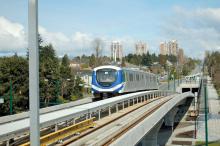
About the only thing that’s held steady at ITS Canada throughout this period is the aim to achieve transportation efficiency by minimising transportation problems. Steele acknowledges that this is a lofty goal in a country as vast and as diverse as Canada.
To put it into perspective, at 3.8 million square miles Canada is only slightly larger than the US, taking into account Alaska and Hawaii. But the US has a population of about 330 million versus Canada at only 38 million, just more than a tenth of the US population.
The US population density is 94 people per square mile while Canada’s is 11 people per square mile.
However, importantly, around 81% of the Canadian population is urban – about the same as the US, at 83%. This is why ITS is as important in Canada as in other countries, notes Steele. To this end, ITS Canada and its members have contributed to countless critical infrastructure projects over these past 25 years. After a successful experiment in the use of a digital computer for remote traffic signal control, Toronto became the first city in the world to implement a full-scale computerised traffic signal system.
In the mid-1970s, the province of Ontario initiated an MTCS – municipal traffic control system – programme to assist small jurisdictions with set up of computerised traffic management systems. Then in the mid-1980s, Ontario developed and implemented the world’s first 100% fibre-optics-based freeway traffic management system.
“We’ve grown into a community of experts and specialists who have helped shape the industry into what it is today,” says Steele. “As traffic, congestion, mobility challenges, transportation modes and commuter expectations have multiplied, we have focused on keeping it all flowing smoothly.
“ITS Canada is actively expanding its membership with a focus on increased networking to share information and cultivate relationships that can blend old and new technologies into tomorrow’s ITS designs,” he says.
Booth 1052















